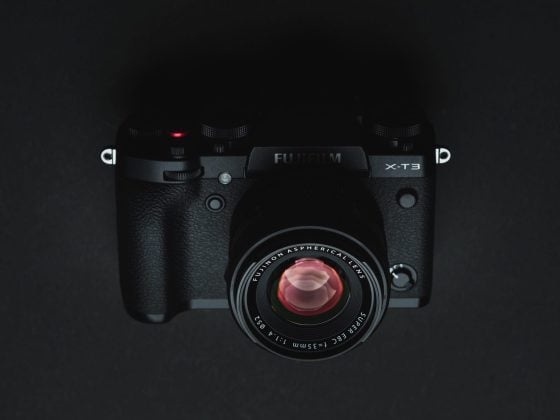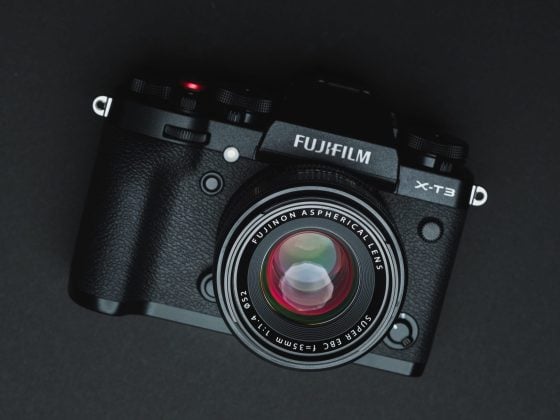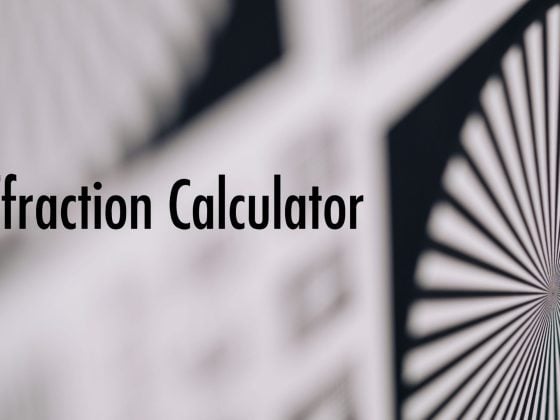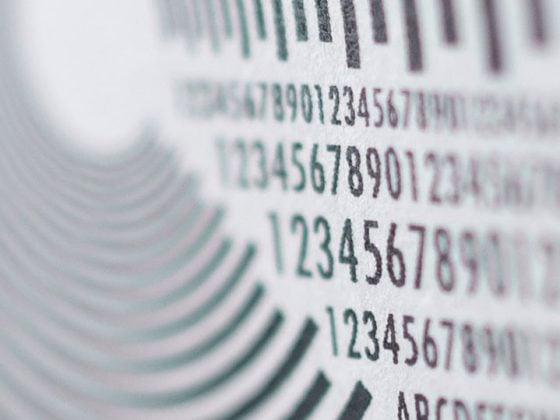The depth of field calculator allows you to find the depth of field of an aperture of any lens at any distance. The depth of field calculator also includes a 35mm equivalency calculation so you can see the equivalent lens crop and depth of a given aperture on smaller or larger sensor cameras compared to full-frame 35mm.
Depth Of Field Calculator
You may notice that the depth of field gets shallower as you use smaller sensors with the same lens. There is a lot to consider when looking at depth of field with different sensor size and this calculator above doesn’t compensate for sensor resolution, printing or display size.
This calculator is built with the industry numbers of what a general circle of confusion would be for each sensor size. More on that late, but basically the numbers come from viewing a printed photo at a normal viewing distance, not the 100% crop of an image.
There is a lot more that goes on if you factor in sensor size, the circle of confusion and print size and this chart uses the industry-standard circle of confusion numbers.
This all get’s very complicated very quickly so I’ll break it down into what’s happening with each system.
The Circle Of Confusion
Circle of confusion = the disc or cone of light a lens produces that is considered acceptably sharp or in focus.
The Depth of Field calculator is based on a circle of confusion of standard photo viewing distances.
These are general numbers set by camera manufacturers. However, the value of the circle of confusion will change depending on sensor resolution and viewing distance. If you get closer to a high-resolution sensor, you will get better precision when decerning what’s in and out of focus.
Circle Of Confusion Sensor Values
Medium Format = 0.05mm
Full Frame = 0.03mm
APS-C = 0.02mm
APS-C Canon = 0.019mm
Micro 4/3 = 0.015mm
1″ = 0.011mm
These values are adequate for the sake of calculations, but depth of field and resolution isn’t that simple of course.
Sensor Size & Resolution
It’s best to just use the circle of confusion values above when talking about the depth of field with different sensors and lenses, but there are some technical details that we can look at that will affect depth of field.
Even though we use the circle of confusion to calculate the depth of field with different sensor sizes, the phenomenon is actually optical. The reason CoC is set with sensor sizes is that the detail is needed to see this CoC and generally speaking, the larger film or larger sensor would give you more detail when looking at this CoC.
Weird things can start to happen when we match the resolution of smaller sensors to larger sensors. This is done by increasing the pixel density on the smaller sensor.
Printed images from smaller sensors have to be scaled up more when printing, this also scales up the size of the circle of confusion.
Smaller sensors usually have a higher pixel density which gives a more detailed look at the cropped portion of the image that the lens is projecting. This all plays a roll in the overall perception of depth.
Blowing up the image increases the size of the circle of confusion, but increasing the pixel density improves the resolution of it.
Higher Resolution Sensors Have Shallower DoF | But Not Really
The ability to perceive the depth of field will also change the value of the circle of confusion. Higher resolution sensors give you more precision when looking at pixels that are in focus vs out of focus.
This technically means higher resolution sensors will have a shallower depth of field because you will be able to see the exact point of focus falloff with more detail. Higher resolution sensors don’t change the depth of field, but at the pixel level, they just let you see which pixels are in focus vs out of focus.
So when you see someone say that higher resolution sensors have more depth of field, technically they do, but optically it’s all the same since the effect of the background bokeh will look the same.
Some Practical Application
When you look at the circle of confusion of a full-frame sensor which is 0.03, you see it produces a depth of field of 24.42″. The APS-C CoC of 0.02 produces a depth of field of 16.19″.
The APS-C image with the same lens has a shallower depth of field, weird right?
A 50mm APS-C lens will have a cropped field of view of 75mm. If you compare a full-frame 24-megapixel sensor to a 24-megapixel APS-C camera shooting the same image at the same distance. You’ll be looking at that 1.5x cropped depth of field of the APS-C image with a greater pixel density. This results in shallower perceived depth of field, but technically that depth of field will be shallower only because of the added pixel density of the smaller sensor.
We know this because higher resolutions cameras technically produce a shallower depth of field because you get a more detailed view of the circle of confusion. However, if you were to stand back and look at the images in Lightroom without cropping in, the perceived depth would be the same.
For example, the Sony A7rIV has a 61MP sensor, but you can shoot in APS-C crop mode with 26MP. The depth of field with the same lens will never change if you’re shooting in full-frame mode or APS-C crop mode. However, if you used the same lens on the Sony A7III with its 24MP sensor shot in full-frame mode, you would see less resolution when cropped into the same field of view when compared to the Sony A7rIV shot in the APS-C crop mode and the APS-C crop with the A7rIV would have a shallower depth of field. The rendering would look the same but would be able to see the exact point on the eyelash of where focus stops with the A7rIV.
Now The Not Really Part
It’s kind of a strange technicality but this topic is brought up a lot. Smaller sensors or higher resolution sensors don’t really have a different depth since that’s completely analog and produced by the lens, but increasing the technology of the sensor is like adding more detailed notches on the ruler when it comes to measuring depth. This is likely why camera manufacturers refer to those standard circle of confusion values.
The Real Science Of Lens Equivalency
The above calculators are all based on a viewing distance and subjectivity of human perception and the assumption that we all have 20/20 vision. It also assumes that as you move to a smaller sensor, you increase the resolution.
In reality, based on the physics of light, an f1 lens always produces the same depth no matter what sensor you stick behind it. A lens doesn’t care about crop factor or the circle of confusion of a sensor’s pixel pitch. An f1 lens produces the same depth on a full-frame camera as it would on an APS-C camera. That is just the laws of physics, it’s not magically changing its cone of focus because of a different sensor.
How Printing Changes CoC
Printing, or scaling up smaller sensor images to match the same viewing size distance of larger sensors has the biggest effect on the depth and any sort of an optical anomaly because everything is scaled.
This is the biggest reason why larger sensor cameras are better, it’s not about the resolution. Actually, the resolution shouldn’t even be mentioned when comparing sensor sizes, it’s an irrelevant characteristic when making a comparison.
Images from smaller sensors have to be scaled more to match the same image from a larger sensor resulting in a larger circle of confusion but also, any flaws and imperfections are also enlarged.
Looking at Hard Numbers
If we were to shoot the Sony A7rIII full frame with a given lens, a 50mm f1, then shoot in APS-C crop mode with the same lens 50mm f1. We would have the same pixel pitch and the same circle of confusion but a different perspective of 75mm.
So we could calculate in the maximum circle of confusion of the A7rIII, 2 x 4.51microns = 0.009mm.
Viewing at a close distance gives us the actual maximum value of the circle of confusion and a depth of field value of 2.59.”
This means the Sony A7rIII has a maximum depth of field of 2.59″ regardless of viewing subjectivity.
Now, we can do our APS-C crop with 18 megapixels, but since we don’t have any more megapixels to crop into, we can use the standard CoC given by APS-C sensors with a value of 0.02mm with a 75mm crop factor.
This gives us a depth of field of 2.54″.
When using these calculations, the A7rIII full frame has a maximum CoC value of 2.59″.
The A7rIII 18MP APS-C with a standard CoC value produces 2.54″.
They are nearly identical.
Depth of Field Equivalency | Conclusions
A lens always produces the same depth of field regardless of the sensor you put behind it, but as you move to larger or smaller sensors, you will have to change your lens focal length or distance to match the perspective and this will change the depth of field of a lens.
For real-world use, I added a 35mm lens equivalency and aperture value that would produce the same results at the same distance to help settle any confusion. You would have to adjust the exposure with shutter or ISO to compensate for the different aperture because no matter what camera you use, an f1 lens will always allow more light in than an f1.5 lens as long as the light transmittance value, the T-stop, matches the f-stop.
This expels another myth, “bigger sensor gathers more light.” But of course, you could get technical and say, if you’re viewing a large sensor and a small sensor image at equal size, the smaller sensor had to be scaled to match and that smaller sensor image was technically rendered with less light because of less surface area.
| **This website contains affiliate links. We will earn a small commission on purchases made through these links. Some of the links used in these articles will direct you to Amazon. As an Amazon Associate, I earn from qualifying purchases. |




